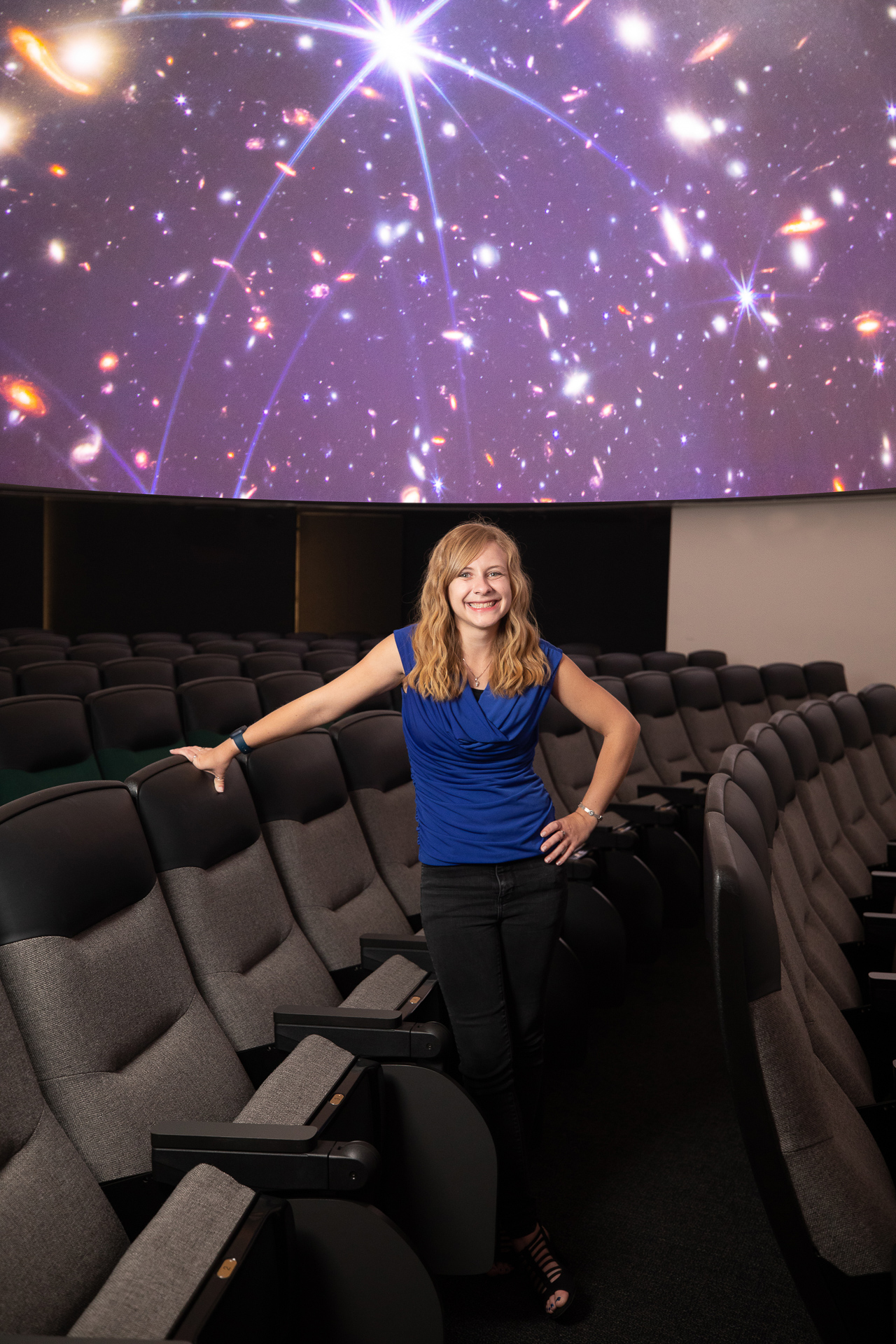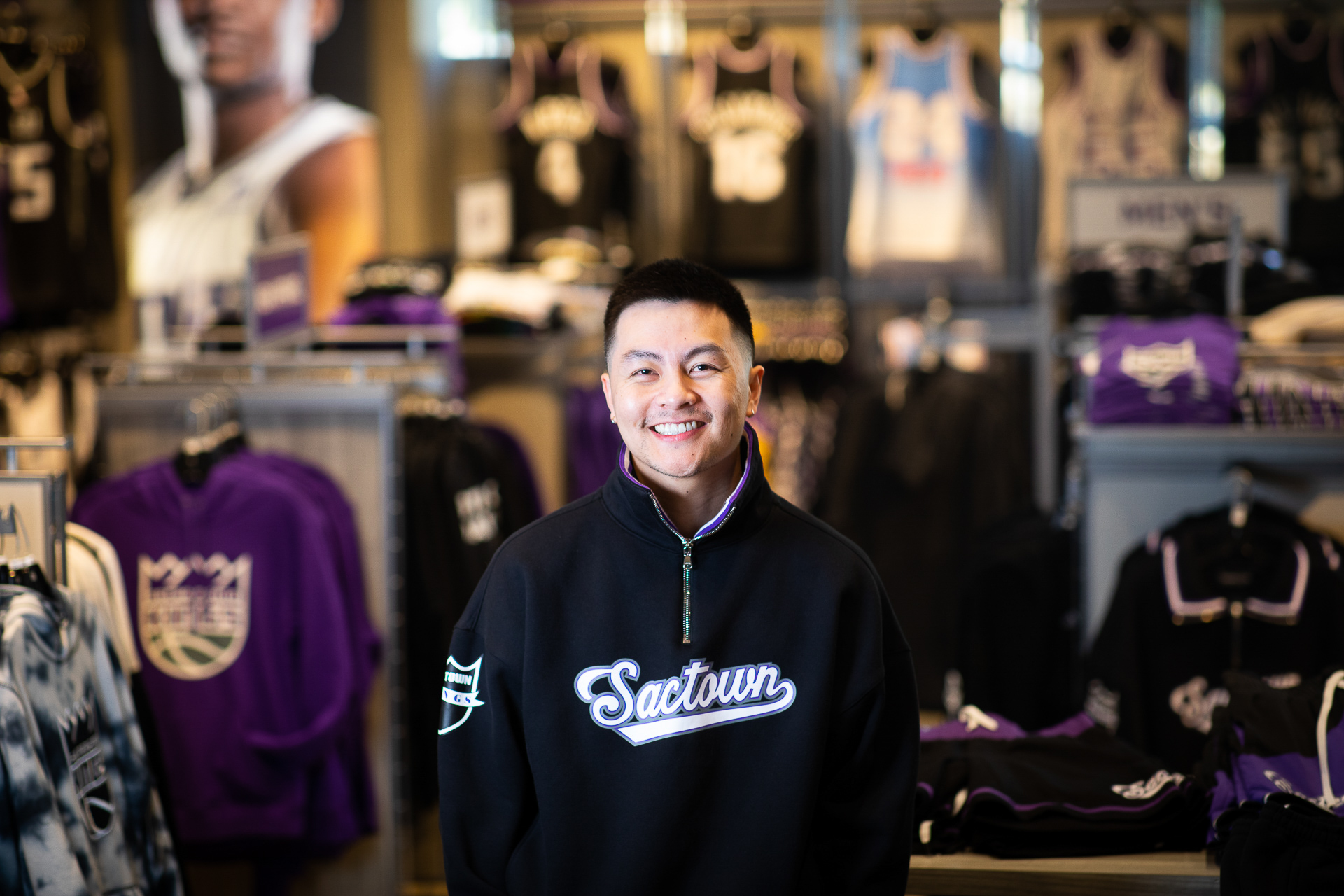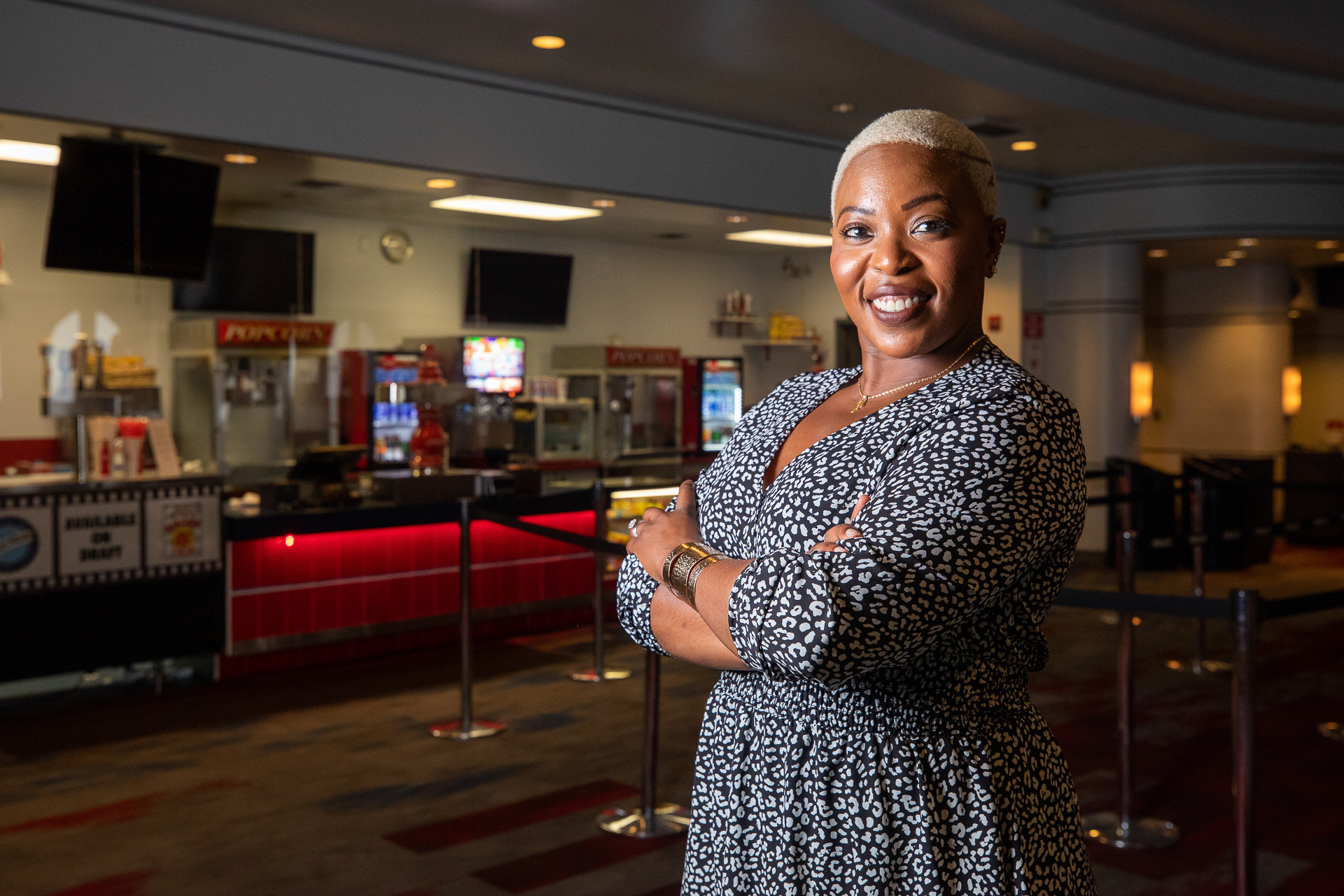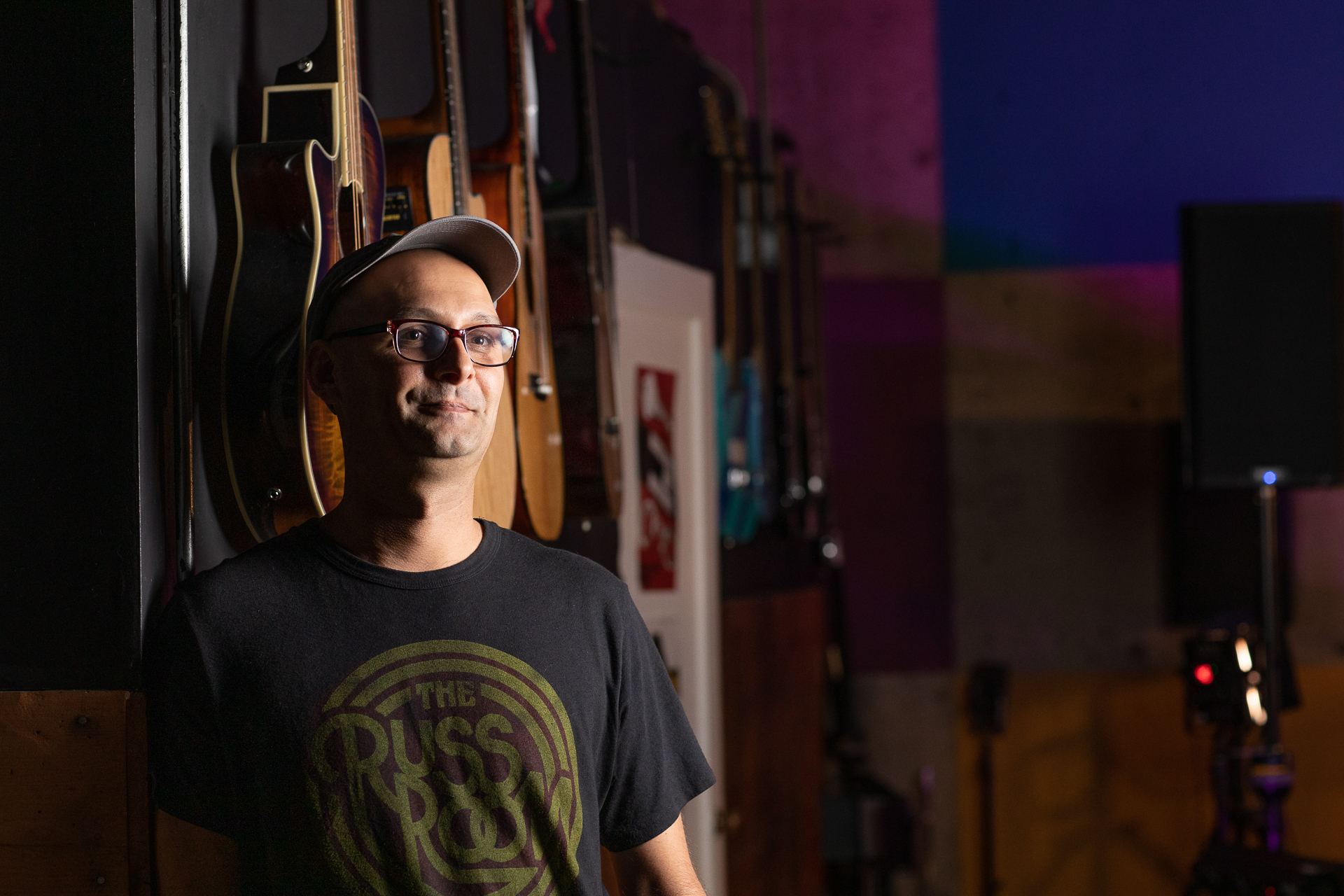Story Content
With her career blasting off, Elizabeth Gabler remains grounded in the community
October 14, 2022

Elizabeth Gabler ’19 (Physics and Astronomy) was often the only woman in her science classes. At her first job, just 5% of employees were women. At her current job, she’s one of just two.
It’s a well-documented problem: Girls begin losing interest in STEM (science, technology, engineering and math) while young, in part because they don’t see a place for themselves in those fields. It’s partly why Gabler, active locally in science education, relishes any opportunity to connect with young girls interested in science.
“When I do outreach and I see this spark of inspiration, and they go, ‘Oh, I’m good at this, I like doing this,’ I’m like, ‘Yes! Follow that,’ ” Gabler said.
It’s a feeling Gabler followed through childhood, to Sacramento State, and ultimately to a place in the upper echelon of the world’s young scientists.
Rocket scientist? Gabler helped NASA build a spacecraft – while still in college.
Nuclear physicist? She works at the UC Davis McClellan Nuclear Research Center on a program featuring NASA, SpaceX, and the U.S. Department of Defense as partners.
In addition to that work, she pays it forward for the next generation by leading tours at McClellan, serving as a docent at her hometown Placerville Community Observatory, and designing and running shows at the Sac State Planetarium.
In 2020, The Mars Generation named Gabler to its “24 Under 24” list, identifying her as one of the top young scientists in the world.
“That was a huge honor, basically saying (that) all my hard work paid off,” Gabler said. “It just felt so good, and I really tried to use that recognition to show other people, ‘Hey, this is what I did. You can do it too.’ ”
Fascinated as a child by science and learning how things work, Gabler initially thought she would pursue paleontology. In high school, however, the observatory recruited her as a docent, and her aspirations turned toward astronomy.
She credits the observatory director for encouraging her to pursue the field, a big reason for her present-day commitment to science education.
“He changed my life just by saying, ‘Come try this, come see if you like this,’ ” she said. “And I want other kids to see it’s that easy.”
After graduating from high school, Gabler was attracted to Sac State’s small but high-quality physics program, where everyone knew each other and the atmosphere was supportive and collaborative.
She excelled in her courses and developed the solid foundation in science that, as she moved through the professional world, allowed her to learn quickly on the job. However, events outside the classroom helped put her career on a rocket-like trajectory.
“Her continuing involvement is a testament to Sac State, both by showing how far a student can go, and also by showing the strength of the Sac State community she continues to be a part of." -- Kyle Watters, Sac State lecturer in Physics and Astronomy, Planetarium coordinator
First, she was recruited as a sophomore for an internship at Sacramento-based aerospace and defense firm Aerojet Rocketdyne. After just three months, she was offered a full-time position, which led to her becoming part of the Double Asteroid Redirection Test (DART) team. That group built a spacecraft meant to crash into and possibly redirect asteroids. Such an instrument could nudge an asteroid off a collision course with Earth and save the planet from catastrophe.
Gabler was one of just a handful of women on the team, and the youngest.
“I’m considered the world’s youngest planetary defender,” said Gabler, who even has an official plaque from NASA certifying her as such.
The second event came in 2019, with the opening of Sac State’s Ernest E. Tschannen Science Complex and its associated Planetarium.
“Quite literally, the first day of school, I was banging down the door to be let in to learn how to use the Planetarium,” she said. “I got in there and day one was coding my own shows.”
Among presentations Gabler created are the popular Harry Potter-themed shows, which are gearing up again this month in conjunction with Halloween.
“Elizabeth really goes all out when she is hosting shows at the Planetarium,” said Kyle Watters, a Sac State lecturer in Physics and Astronomy and Planetarium coordinator. “She does an amazing job of getting visitors excited and involved.”
Gabler was one of the Planetarium’s first employees when it opened in fall 2019, Watters said, going beyond her job description by designing her own full show. When the facility reopened in fall 2021 after being closed for nearly two years because of COVID-19, Gabler was there, ready to host excited crowds.
“Her continuing involvement is a testament to Sac State, both by showing how far a student can go, and also by showing the strength of the Sac State community she continues to be a part of,” Watters said.
At McClellan, Gabler works in neutron radiography, where her tasks include inspecting parts for spacecraft that will be part of NASA’s Artemis moon missions. She is training to become a federally licensed reactor operator of the facility’s Teaching Research Isotope made by General Atomics (TRIGA) nuclear reactor.
Gabler’s ambitions go even farther into the cosmos: Her ultimate goal is to be part of the team that puts humans on Mars.
In September, she enjoyed the fruits of her first major project. The DART spacecraft finished its four-year journey and successfully crashed into the asteroid Dimorphos. It was a rough end for the machine Gabler helped build but a moment of joy for her and others who worked on the mission.
Gabler’s face lit up during a subsequent television interview as she excitedly discussed the project, indicative of her unique position as one of the top young scientists in the world, who also genuinely enjoys sharing her knowledge with the public.
It’s a position she has earned with a little bit of good fortune, a lot of hard work, and plenty of perseverance. Gabler recalled being in the tutoring center as a first-year Sac State student, working on her basic physics homework while observing a senior student do quantum physics homework.
That looks too hard, she thought. I’m never going to be able to do that.
“I think a lot of people just get overwhelmed their first or second year,” she said. “You’ve just gotta breathe and take it one step at a time, one class at a time, and you will be able to do what you didn't think you could have a few years before.”


